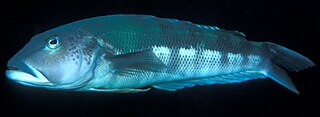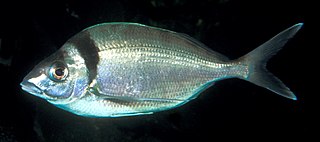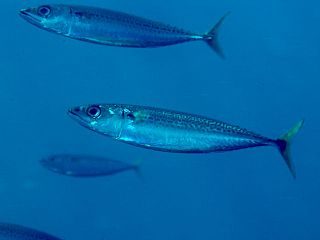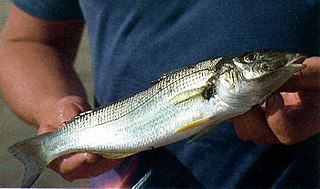| Arthritica bifurca | |
|---|---|
| Scientific classification | |
| Kingdom: | Animalia |
| Phylum: | Mollusca |
| Class: | Bivalvia |
| Subclass: | Heterodonta |
| Order: | Galeommatida |
| Family: | Lasaeidae |
| Genus: | Arthritica |
| Species: | A. bifurca |
| Binomial name | |
| Arthritica bifurca (Webster, 1908) [1] | |
| Arthritica bifurca | |
|---|---|
| Scientific classification | |
| Kingdom: | Animalia |
| Phylum: | Mollusca |
| Class: | Bivalvia |
| Subclass: | Heterodonta |
| Order: | Galeommatida |
| Family: | Lasaeidae |
| Genus: | Arthritica |
| Species: | A. bifurca |
| Binomial name | |
| Arthritica bifurca (Webster, 1908) [1] | |
Arthritica bifurca is a hermaphroditic bivalve mollusc, with a shell length of approximately 6mm. [2] [3] Arthritica bifurca has D-shaped larvae. [4]
Arthritica bifurca is found free-living in mud or muddy sand habitats in New Zealand estuaries. [3] [4] [5]

Bivalvia, in previous centuries referred to as the Lamellibranchiata and Pelecypoda, is a class of marine and freshwater molluscs that have laterally compressed bodies enclosed by a shell consisting of two hinged parts. Bivalves as a group have no head and they lack some usual molluscan organs like the radula and the odontophore. They include the clams, oysters, cockles, mussels, scallops, and numerous other families that live in saltwater, as well as a number of families that live in freshwater. The majority are filter feeders. The gills have evolved into ctenidia, specialised organs for feeding and breathing. Most bivalves bury themselves in sediment where they are relatively safe from predation. Others lie on the sea floor or attach themselves to rocks or other hard surfaces. Some bivalves, such as the scallops and file shells, can swim. The shipworms bore into wood, clay, or stone and live inside these substances.

The New Zealand blue cod is a temperate marine fish of the family Pinguipedidae. It is also known variously as Boston blue cod, New Zealand cod, sand perch, or its Māori names rāwaru, pākirikiri and patutuki.

The New Zealand pea crab, Nepinnotheres novaezelandiae, is a small, parasitic crab that lives most commonly inside New Zealand green-lipped mussels. Adult females are about the size and shape of a pea, while adult males are smaller and flatter. Adult New Zealand pea crabs are completely reliant on their host mussel for shelter and food, which it steals from the mussel's gills. The New Zealand pea crab is found throughout New Zealand and can infect up to 70% of natural populations. These crabs are of concern to green-lipped mussel aquaculture because they reduce the size and growth of mussels, although infected mussels can be harvested and consumed.

Jasus edwardsii, the southern rock lobster, red rock lobster, or spiny rock lobster, is a species of spiny lobster found throughout coastal waters of southern Australia and New Zealand including the Chatham Islands. This species is commonly called crayfish or crays in both Australia and New Zealand and kōura in Māori. They resemble lobsters, but lack the large characteristic pincers on the first pair of walking legs.

Nemadactylus macropterus, commonly known as the tarakihi or jackass morwong, is a morwong of the genus Nemadactylus, found off southern Australia, the Atlantic coast of South America, and New Zealand to depths of about 400 m, on all types of bottoms. Its length is between 30 and 60 cm. They were first found on the south-western coast of the North Islands in 1963-72. It is ranked second on the total of New Zealand wet fish but very little is known about them.

The blue mackerel, also called Japanese mackerel, Pacific mackerel, slimy mackerel or spotted chub mackerel, is a fish of the family Scombridae, found in tropical and subtropical waters of the Pacific Ocean from Japan south to Australia and New Zealand, in the eastern Pacific, and the Indo-West Pacific: the Red Sea, the Persian Gulf, the Gulf of Oman and the Gulf of Aden, in surface waters down to 200 m (660 ft). In Japanese, it is known as goma saba. It typically reaches 30 cm (12 in) in length and 1.4 kg (3.1 lb) in weight.

Blue moki is a species of trumpeter native to the southwestern Pacific Ocean around New Zealand and occasionally off southeastern Australia at depths of 10 metres (33 ft) and greater. Juveniles inhabit inshore waters, preferring rocky reefs while adults mostly occur in offshore waters forming schools over open bottoms. Some solitary adults can be found on reefs. This species can reach a length of 80 centimetres (31 in) FL, though most do not exceed 63 centimetres (25 in) TL. This species is commercially important and is also popular as a game fish.

The New Zealand longfin eel is a species of freshwater eel that is endemic to New Zealand. It is the largest freshwater eel in New Zealand and the only endemic species – the other eels found in New Zealand are the native shortfin eel, also found in Australia, and the naturally introduced Australian longfin eel. Longfin eels are long-lived, migrating to the Pacific Ocean near Tonga to breed at the end of their lives. They are good climbers as juveniles and so are found in streams and lakes a long way inland. An important traditional food source for Māori, longfin eels are threatened and declining but still commercially fished.

The banded kōkopu is a galaxiid of the genus Galaxias, found only in New Zealand, including the Chatham and Stewart/Rakiura islands. It commonly grows to 20–25 cm, but has been recorded growing to around 30 cm. Juvenile banded kōkopu are good climbers and can climb up waterfalls and other vertical surfaces by moving into the splash zone and wriggling up the surface, using the water surface tension and their large downturned fins for grip.

The Unionidae are a family of freshwater mussels, the largest in the order Unionida, the bivalve molluscs sometimes known as river mussels, or simply as unionids.

Notomithrax ursus, known as the hairy seaweed crab, is a spider crab of the family Majidae.

Onchidella nigricans is a species of small, air-breathing sea slug, a shell-less marine pulmonate gastropod mollusc in the family Onchidiidae.
Abergasilus amplexus is a species of parasitic copepod endemic to euryhaline habitats in New Zealand. It is the only known species in the genus Abergasilus.

Diloma bicanaliculatum, common name the knobbed top shell, is a species of small sea snail, a marine gastropod mollusk, in the family Trochidae, the top snails. The size of the shell varies between 10 mm and 20 mm.

The sand whiting, also known as the summer whiting, yellowfin whiting or blue-nose whiting, is a common species of coastal marine fish of the family Sillaginidae, the smelt-whitings. It is a slender, slightly compressed fish that is very similar to other species of Sillago, with detailed spine, ray and lateral line scale counts needed to distinguish the species between its nearest relative Sillago analis. The sand whiting is distributed along the east coast of Australia from Cape York south to Tasmania, as well as Lord Howe Island and New Caledonia in the Pacific Ocean.

Lasaeidae is a family of very small saltwater clams, marine bivalve molluscs in the order Galeommatida. These bivalves are sometimes called "kelly clams", because one of the genera in this family is Kellia.

Mollusca is the second-largest phylum of invertebrate animals after the Arthropoda. The members are known as molluscs or mollusks. Around 85,000 extant species of molluscs are recognized. The number of fossil species is estimated between 60,000 and 100,000 additional species. The proportion of undescribed species is very high. Many taxa remain poorly studied.

Cominella virgata is a species of predatory sea snail, a marine gastropod mollusc in the family Buccinidae, the true whelks.

Calliotropis crystalophora is a species of sea snail, a marine gastropod mollusk in the family Eucyclidae.
The Tasman Front is a relatively warm water east-flowing surface current and thermal boundary that separates the Coral Sea to the north and the Tasman Sea to the south. The name was proposed by Denham and Crook in 1976, to describe a thermal front that extends from Australia and New Zealand between the Coral Sea and Tasman Sea. Originating in the edge of the East Australian Current (EAC), the Tasman Front meanders eastward between longitudes 152° E and 164° E and latitudes 31° S and 37° S, then reattaches to the coastline at New Zealand, forming the East Auckland Current.